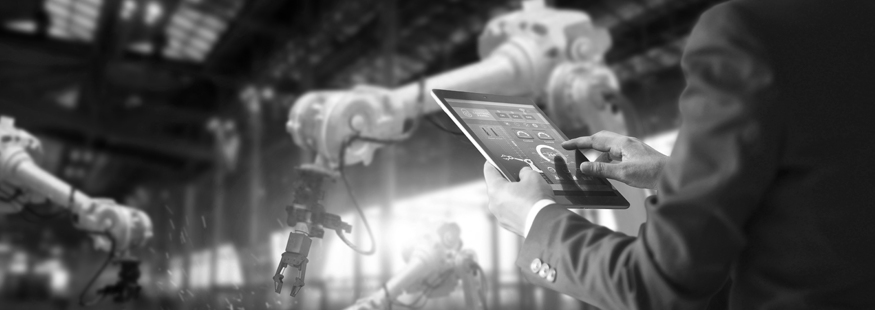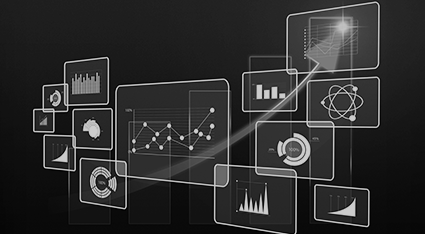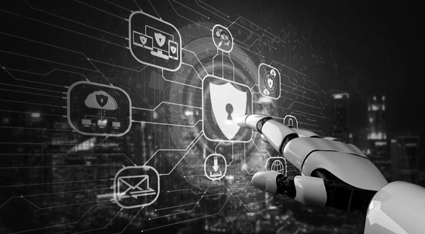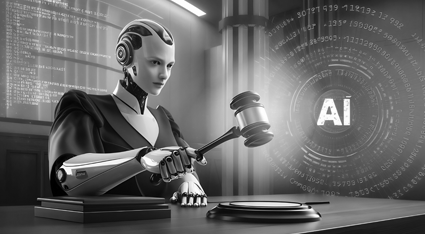Introduction
Manufacturing is entering a new era of intelligence and automation. AI, IoT, and cloud computing are revolutionizing production lines, enabling real-time monitoring, predictive maintenance, and data-driven decision-making. Enterprises that adopt smart manufacturing will experience increased efficiency, reduced downtime, and greater agility in responding to market demands.
In 2025, manufacturers that fail to integrate AI-driven automation, IoT-enabled connectivity, and cloud-based analytics into their operations will struggle to remain competitive. Smart manufacturing is no longer an option—it is a necessity.
How AI, IoT, and Cloud Computing Work Together in Manufacturing
AI-Driven Automation for Precision Manufacturing
AI-powered robotics and machine learning algorithms optimize production workflows, reducing human errors and increasing efficiency. AI enables predictive decision-making, allowing manufacturers to adjust operations dynamically.
IoT for Real-Time Monitoring & Connectivity
IoT-connected sensors track machine performance, monitor environmental conditions, and detect production bottlenecks. This real-time visibility helps manufacturers prevent failures and improve supply chain management.
Cloud Computing for Scalable Data Processing
Cloud-based platforms store, process, and analyze vast amounts of manufacturing data. By leveraging cloud computing, businesses can access insights from any location and scale their operations seamlessly.
Key Benefits of AI, IoT, and Cloud Computing in Smart Manufacturing
Predictive Maintenance & Downtime Reduction
AI analyzes equipment performance to predict failures before they happen. IoT-enabled sensors send real-time alerts, allowing maintenance teams to address issues proactively and reduce unplanned downtime.
Optimized Production Efficiency
Smart manufacturing reduces waste, increases throughput, and improves resource allocation through AI-driven automation and real-time analytics.
Enhanced Supply Chain Visibility
Cloud-based systems track inventory levels, supplier performance, and production schedules, ensuring manufacturers have the right materials at the right time.
Energy Efficiency & Sustainability
AI-driven energy management systems optimize power consumption, reducing operational costs and minimizing environmental impact.
How Enterprises Can Implement Smart Manufacturing
Integrate IoT-Connected Sensors
Deploying IoT sensors across production lines helps manufacturers collect real-time data on machine health, environmental conditions, and production efficiency.
Implement AI-Driven Process Automation
AI-powered robotics and machine learning models optimize production line efficiency by adjusting workflows, reducing errors, and improving product quality.
Leverage Cloud-Based Manufacturing Analytics
Cloud computing enables manufacturers to analyze production data, track performance metrics, and scale their operations without hardware limitations.
Adopt Digital Twins for Production Optimization
Digital twin technology creates virtual models of physical assets, allowing manufacturers to test process improvements, predict system failures, and simulate production scenarios.
Challenges in Smart Manufacturing Adoption
Cybersecurity Risks in Connected Factories
As IoT devices become more prevalent in manufacturing, businesses must implement strong cybersecurity measures to protect against data breaches and unauthorized access.
Integration with Legacy Manufacturing Systems
Many factories rely on legacy systems that are not designed for AI or IoT integration. A phased implementation approach is necessary to transition towards smart manufacturing.
High Implementation Costs & ROI Concerns
Smart manufacturing requires investments in AI, IoT, and cloud infrastructure. However, businesses must focus on long-term ROI through reduced operational costs and increased production efficiency.
The Future of Smart Manufacturing
AI, IoT, and cloud computing are transforming manufacturing, enabling businesses to optimize production, enhance security, and reduce costs. Smart manufacturing is no longer a futuristic concept—it is the new standard for enterprises seeking efficiency and agility in their operations.
Manufacturers that embrace AI-driven automation and IoT connectivity will be better equipped to adapt to market changes, optimize production, and drive long-term growth. The future of manufacturing is intelligent, connected, and data-driven—and enterprises must act now to stay ahead of the curve.







